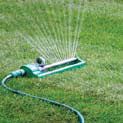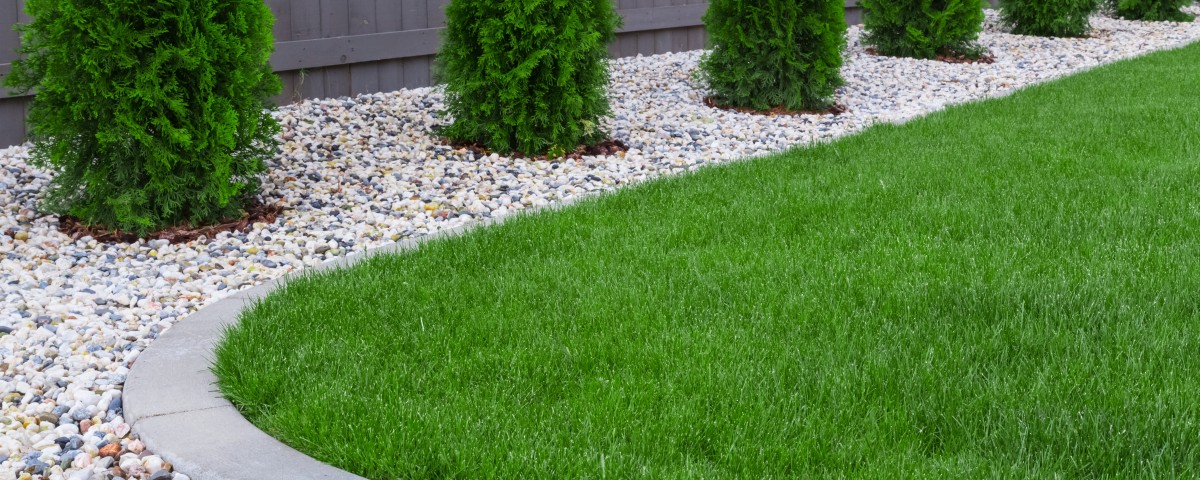
Our Clients:

RED THREAD
How to Get Rid of Moss in Your Yard
May 1, 2018
Common Lawn Problems And How To Fix Them
July 29, 2019What is Red Thread?
Red thread is a common lawn occurrence in Western Washington. Although this fungus looks deadly when it shows off its characteristic red antlers or pink fuzz, red thread is harmless. It is temporary and cosmetic in nature. Here is what you can do to help your lawn regain its appearance and overcome red thread.
Identifying Red Thread
Homeowners often notice red thread on their lawns in March, but an outbreak can occur any time of the year. Outbreaks often occur during extended cool, humid, cloudy, and foggy weather.
Although the first sign of red thread is a dark, water-soaked irregular patch of 2 to 24 inches in diameter followed by a ragged look with bleached, tan, or brown blades; most homeowners discover red thread when they see reddish, pinkish, or orangish strands or webs growing on their lawn. These are the red threads (mycelia and sclerotia) that give the fungus its common name. The strands are usually visible in humid conditions, especially on a foggy or dewy morning.
Why does my lawn have red thread?
Just as tree pollen is in the air, red thread spores and bits of the fungus are in the soil, thatch, air, and water in Western Washington. Red thread bits (sclerotia) live up to two years, waiting for conditions to be right. In Western Washington, our fall, winter, and spring weather provides red thread with exactly the kind of growing conditions it likes. When conditions are just right, red thread can be severe. The good news is you don’t need to eradicate red thread – you just need to help your lawn to be healthy enough to resist it.
How bad is red thread?
Because red thread is a foliar disease of the grass blades (the top of the plant), not the crown and roots (the heart and core of the plant), it is not a deadly disease for turfgrass. Even without any treatment, most lawns recover on their own when temperatures rise and moisture levels drop. With the warmer weather, the turfgrass grows new blades and live on. Red thread for a lawn is like a cold is for a human – annoying, but not dangerous.
Fertilization is critical
The first and most important thing to do to handle red thread is to determine if your lawn has adequate fertility. In other words, has your lawn been getting the recommended amount of fertilizer at the right times during the year? Fertilizing regularly gives the soil the nutrients it needs to sustain healthy turfgrass growth during the growing seasons.
Fertilize to overcome an outbreak of red thread
If your lawn is experiencing a red thread outbreak now and you are due for fertilizing, the best and quickest treatment is to apply fertilizer. Red thread takes advantage of slow-growing turfgrass. Getting your grass growing again at a reasonable rate helps your lawn overcome red thread. To treat a red thread outbreak, we recommend using a fertilizer with a quick release water-soluble source of nitrogen such as 21-0-0 (ammonium sulfate) or 27-0-0 (calcium ammonium nitrate). With fertilizer, turfgrass usually recovers quickly from red thread.
Fertilize to avoid future outbreaks of red thread
For the prevention of future outbreaks and the overall health of your lawn, it is important to continue fertilizing. Because red thread takes advantage of turfgrass whenever it is nutrient deficient, it doesn’t help to fertilize sporadically or irregularly. For example, skipping the fall fertilizer application can leave the turfgrass vulnerable to red thread in the early spring. Skipping months or years of fertilization can leave the turfgrass even more vulnerable to red thread. The best practice is to follow a yearly fertilization schedule, applying the right amount of the right fertilizer at the right times.
How lime helps with red thread
Because applying lime is part of a good fertilization program, it is an important practice in resisting red thread. Lime helps keep your soil at the correct pH level which helps turfgrass take advantage of the fertilizer you provide it. Adequate and usable nutrients are what the turfgrass needs for health and vigor. For more about the importance of lime, see our information on fertilizing.
Watering to prevent red thread
The red thread fungus needs a film of water to spread. Moisture from rain, humidity, fog, or your sprinkler provides the water. Although you can’t control the weather, you can adjust your watering plan so you don’t make red thread conditions worse. The key is don’t give your lawn more water (with your sprinkler or irrigation system) when it already has enough water from rain, dew, and fog. It is especially important to not overwater when temperatures are cool (60 to 70-degrees). And as always, in order to reduce the total time that the grass is wet, avoid late afternoon or night watering.
Chemical Control
Experts do not recommend treating red thread with chemicals in home lawns. Red thread can be controlled by good cultural practices alone. Fertilizing your lawn is usually the first step to take when red thread breaks out and produces the fastest and best results. Time and weather do the rest of the work.
How do I keep red thread from spreading?
During an outbreak on your lawn, you can collect the mower clippings instead of leaving them on the turf and you can rinse the bag and mower afterward. However, according to experts, spreading by mowers, equipment, people, and animals are only minor causes for red thread. The main cause is the red thread sclerotia (bits of the infected tissue), which reside in every lawn. Fortunately, eradication isn’t necessary – improving turfgrass health is effective in stopping the growth of red thread.
Other red thread factors to consider
Besides fertilization and watering, there are other factors you might need to address to stop red thread on your lawn. Anything that causes the grass to grow slowly can be an issue. Factors include compacted soil, low light, poor drainage, poor air circulation, excessive thatch, and drought stress.
Pink patch
Pink patch and red thread often occur together. Pink patch is a separate disease from red thread but the two diseases are so close in identification and causes, that experts recommend treating pink patch at the same time and in the same way as red thread.
Will it be worse next year?
Sometimes, the weather conditions and timing are so perfect for red thread that even the healthiest lawn experiences some. But just because your lawn had an outbreak of red thread this year doesn’t guarantee a future outbreak. Experts say that two to three years of providing adequate and consistent fertilization reduces the severity of red thread outbreaks and often eliminates future outbreaks. The weather can make it difficult at times, but by following the recommended plan, your lawn can resist red thread.
For more information on red thread (Laetisaria fuciformis) and pink patch (Limonomyces rosepellis) see:
Pacific Northwest Plant Disease Management Handbook
https://pnwhandbooks.org/plantdisease/host-disease/lawn-turf-red-thread










